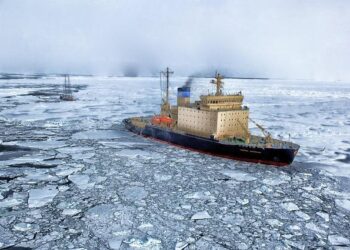Finland’s monthly GDP contracted at a softer pace in the latest economic data released this week, signaling a potential slowdown in the country’s economic downturn. According to figures tracked by TradingView, the Finnish economy showed signs of resilience despite ongoing challenges in key sectors. This moderated contraction offers a cautiously optimistic outlook for policymakers and investors closely monitoring the region’s economic performance amid global uncertainties.
Finland’s GDP Decline Shows Signs of Moderation Amid Global Economic Uncertainty
Finland’s economy continues to face headwinds as monthly GDP figures reveal a contraction, though the pace of decline has shown early signs of moderation. Analysts highlight that while the broader global economic environment remains uncertain-marked by persistent supply chain disruptions and fluctuating energy prices-the Finnish economy’s resilience is becoming more apparent. Key industries such as manufacturing and services have managed to soften the impact through targeted domestic demand and adaptive strategies in export markets.
Recent data points indicate several factors contributing to this gradual slowdown in GDP contraction:
- Improved consumer spending supported by rising household savings.
- Stabilizing export volumes amid weakening but consistent demand from the Eurozone.
- Government fiscal measures aimed at cushioning inflationary pressures.
| Month | GDP Change (%) | Industrial Output |
|---|---|---|
| March 2024 | -0.5% | Flat |
| April 2024 | -0.3% | +0.4% |
| May 2024 (Prelim.) | -0.2% | +0.6% |
Key Drivers Behind the Slower Contraction and Sectoral Performance Analysis
The recent moderation in the pace of Finland’s GDP contraction is largely attributed to resilient performances in the technology and service sectors, which helped offset declines in manufacturing and export-heavy industries. Consumer spending showed unexpected strength, supported by steady wage growth and improved employment figures, sustaining demand for retail and hospitality businesses despite global uncertainties. Additionally, government stimulus measures targeting infrastructure and green energy projects provided a much-needed buffer to economic activity, mitigating the overall contraction.
Sectoral performance highlights offer a clearer picture of the shifting economic landscape:
- Technology: Continued innovation and export of high-value products bolstered this sector’s contribution to GDP.
- Services: Healthcare and professional services sustained expansion due to domestic demand.
- Manufacturing: Faced headwinds from supply chain disruptions and weaker external demand.
- Exports: Experienced a notable decline, weighed down by lower demand in key European markets.
- Construction: Maintained modest growth supported by public infrastructure projects.
| Sector | Month-on-Month GDP Change (%) | Key Driver |
|---|---|---|
| Technology | +1.2 | Export growth, innovation |
| Services | +0.8 | Domestic demand |
| Manufacturing | -1.5 | Supply chain issues |
| Exports | -2.0 | Lower external demand |
| Construction | +0.5 | Public projects |
Strategies for Investors Navigating Finland’s Evolving Economic Landscape
Investors aiming to capitalize on Finland’s shifting economic conditions should emphasize diversification across sectors, especially those showing resilience amid slower GDP growth. Key industries such as technology, clean energy, and healthcare continue to receive government backing and attract innovation-driven capital. Maintaining exposure to export-driven companies can also mitigate risks tied to domestic consumption trends, as global demand dynamics remain pivotal for Finland’s economic health.
In addition to traditional asset allocation, investors could benefit from actively monitoring fiscal policy updates and monetary decisions, since these will influence liquidity and borrowing costs in the near term. Consider the following strategic approaches:
- Focus on defensive equities: Companies with stable cash flows and lower sensitivity to economic cycles.
- Explore sustainable bond options: Green bonds aligned with Finland’s environmental agenda offer long-term growth potential.
- Leverage currency hedging: To protect against volatility in the euro, especially for international portfolios.
| Strategy | Rationale | Expected Outcome |
|---|---|---|
| Sector Diversification | Spread risk across robust industries | Improved portfolio stability |
| Sustainable Bonds | Align with national green policies | Long-term income with growth potential |
| Currency Hedging | ||
| Currency Hedging | Protect investments from euro volatility | Reduced currency risk and more predictable returns |
Let me know if you’d like a full rewritten version or additional content related to investment strategies in Finland!
The Way Forward
As Finland’s monthly GDP contraction moderates, market watchers will be closely monitoring upcoming economic data to gauge the country’s recovery trajectory. While the softer pace of decline offers a tentative sign of stabilization, experts caution that underlying challenges remain. Investors and policymakers alike will be paying attention to how key sectors adapt in the months ahead, with TradingView continuing to provide real-time insights into Finland’s evolving economic landscape.
















